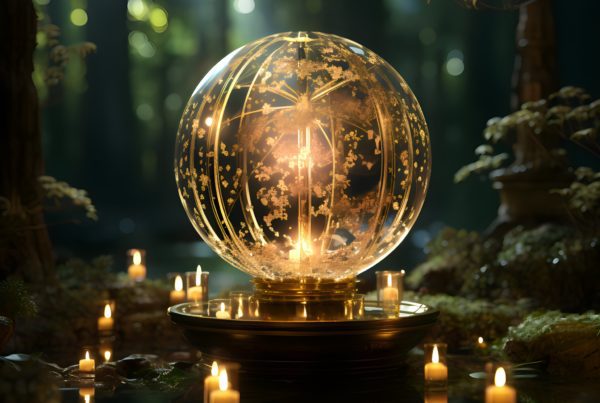Hathor, which means mansion of Horus, is an Egyptian goddess who personifies the principles of joy, feminine love, and motherhood. She is in many ways a representation of the feminine, of feminine energy in its sublimated form.
The goddess Hathor was the wife of Horus and was at times seen as the daughter or mother of the sun-god Ra. In her relation to Ra and her relation to Horus, it becomes clear that she is a sun goddess. She was also referred to as the “mistress of the west”, the place in which the sun goes to sleep or the home of the sun. Many of her characteristics and attributes are associated with the sun: she literally has a “sunny” personality, bringing joy to the houses of those who worship her, which explains her popularity throughout Egypt.
Hathor is often associated with another cow goddess, “Bat”, and the two of them co-existed for a while, until the symbology of the goddess “Bat” was absorbed by Hathor. From that point on, the goddess Hathor also represented and influenced the solar personality (the Egyptian “Ba” meaning personality, the aspect of ourselves that differentiates us from others), helping people assume and express their true selves. She helps us look on the bright side of life and see the beauty in the world and every living being. She helps us pierce the ugliness and uncover the beauty underneath by opening our hearts to unconditional love.
She is represented as a woman (often with cow ears) wearing horns and a solar disk on her head or as a cow with a solar disk (and sometimes the Egyptian cobra) on its head. The cow represents the sacred mother and the cow’s milk symbolises the abundance of mother’s milk and fertility, but it also refers to Hathor as a sky goddess: the milky way was seen as the path, or sky river, along which the sun bark travelled in the sky.
As a “sublime” feminine goddess, she brings feminine energy in its purest form into the world, in the form of beauty (the kind of beauty that flows from natural harmony and divine inspiration), unconditional love and fertility. As a fertility goddess she is also associated with the practice of sacred sexuality between partners that experience unconditional love and she was thought to assist women during childbirth.
Hathor was seen as the patroness of musicians and artists and priests and priestesses of Hathor used to practise music and dance, which were considered to be sacred arts, in her honour. Because of her association with the sun, Hathor was also seen as the patroness of gold miners. Gold was considered a “sacred” metal in many ancient cultures, as it symbolised solidified sunlight and one of the polarities of our existence.
Hathor is also the name of higher-dimensional beings that carry the same energy frequency as the goddess Hathor and that are called “Hathors” as a group. These light beings, or energy beings, are healing energies that harmonise dissonant energy fields through the use of sound frequencies or vibration and the application of sacred geometry. They often assist light workers or healers in their work, even without them knowing it consciously.






Recent Comments